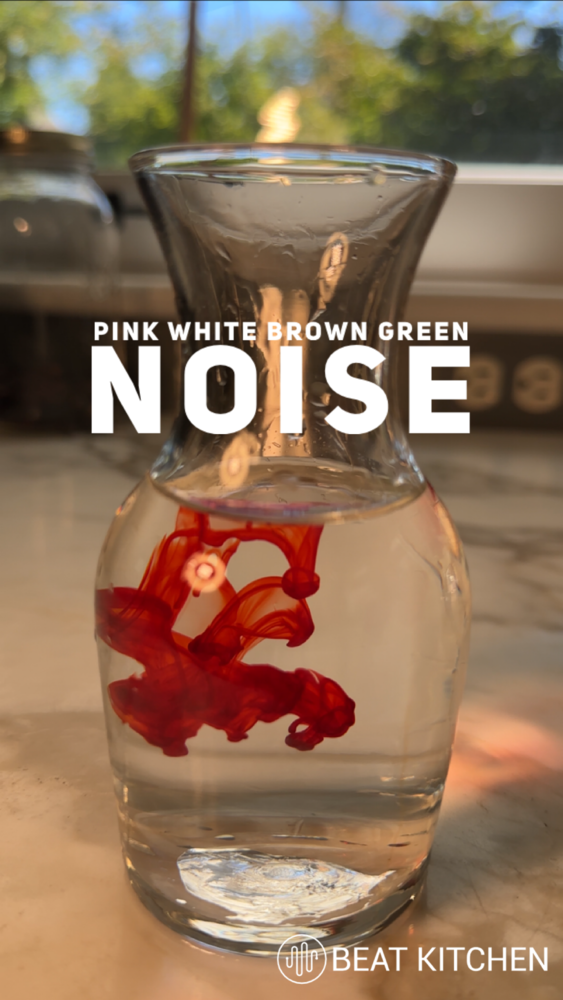Are you using green noise in your recordings because they’ll sell you anything? If you’ve seen ads for green noise and you’ve wondered what it is, let’s start by talking about white and pink noise. White noise is just like white light.
It’s all colors distributed evenly. And with white noise, you’re hearing every single frequency. Okay, so how about pink noise?
Now I’ve been summoned because of the collective blank stare when people explain that pink noise is those same frequencies distributed evenly over every octave. So here’s what you probably don’t understand about that. Octaves aren’t really distributed evenly.
They’re doublings. So while this distance may look the same, if this octave was 100 to 200, this octave would be 200 to 400. And this octave, 400 to 800.
Ow! Think of it this way. This octave is a much bigger container than this one.
Take the same bucket of noise and pour it into progressive octaves. Each octave will be a little less full than the one before it. The result is a gradual tapering off of the upper frequencies.
The distribution of pink noise better reflects the way we perceive sound. Brown noise tends to weight those lower frequencies even more. Green noise, I’m no expert, but that might be a marketing ploy.
It’s advertised as sounding more like nature. Rain, waterfalls, and maybe that’s gonna help you sleep. That’s nice.
This one is way better than a cup of coffee. Show that with someone who belongs in a big kitchen class.

